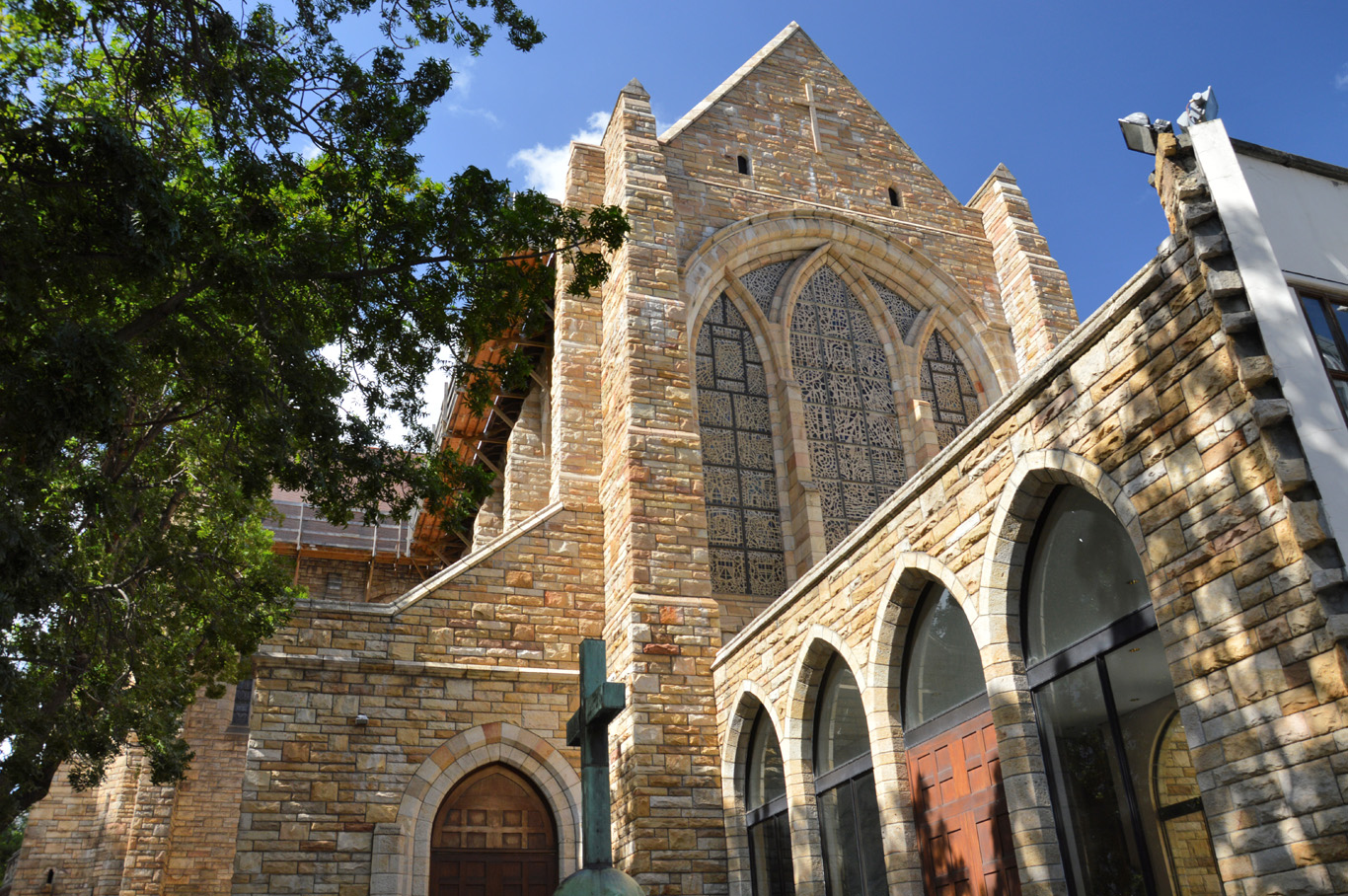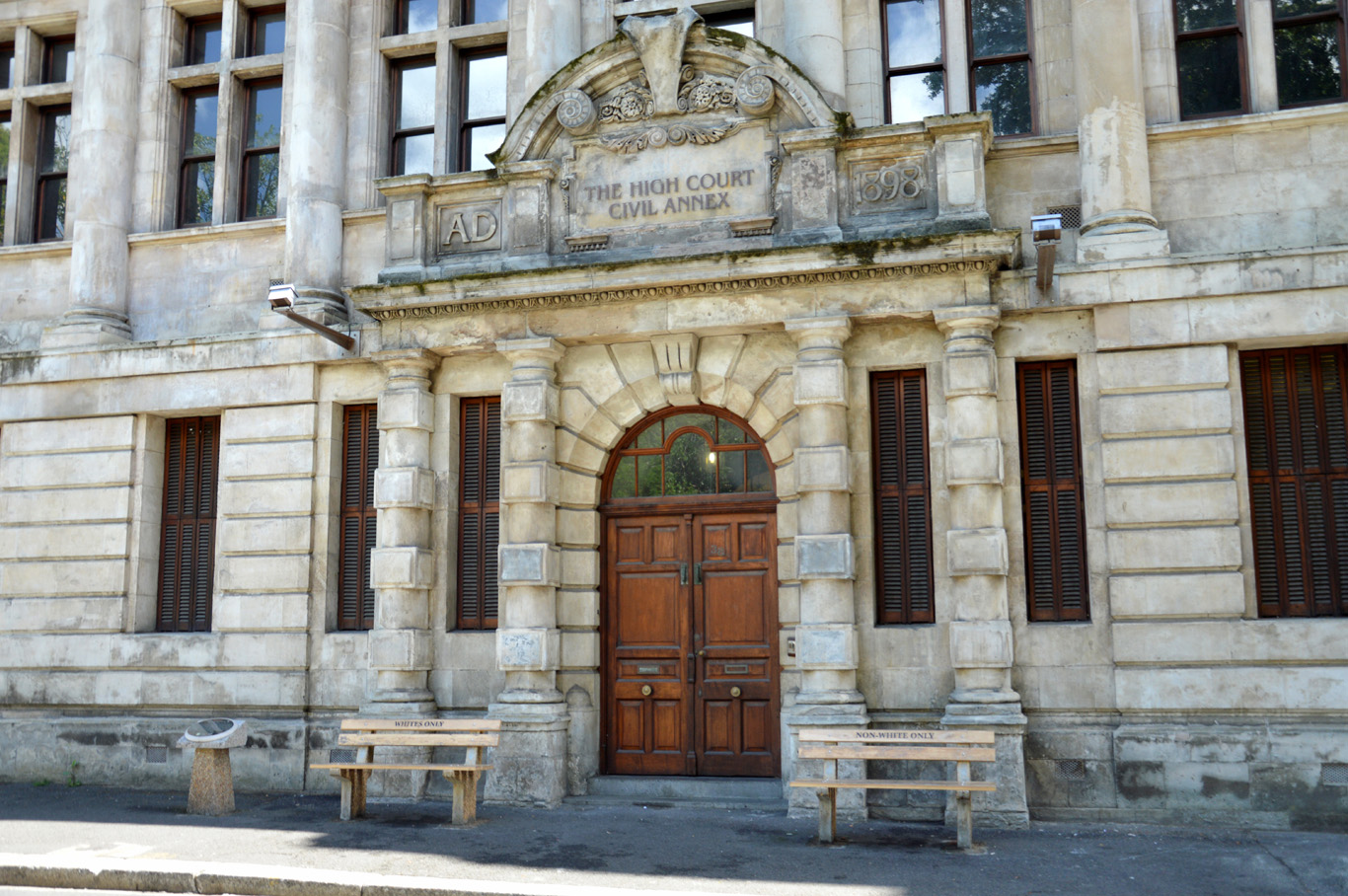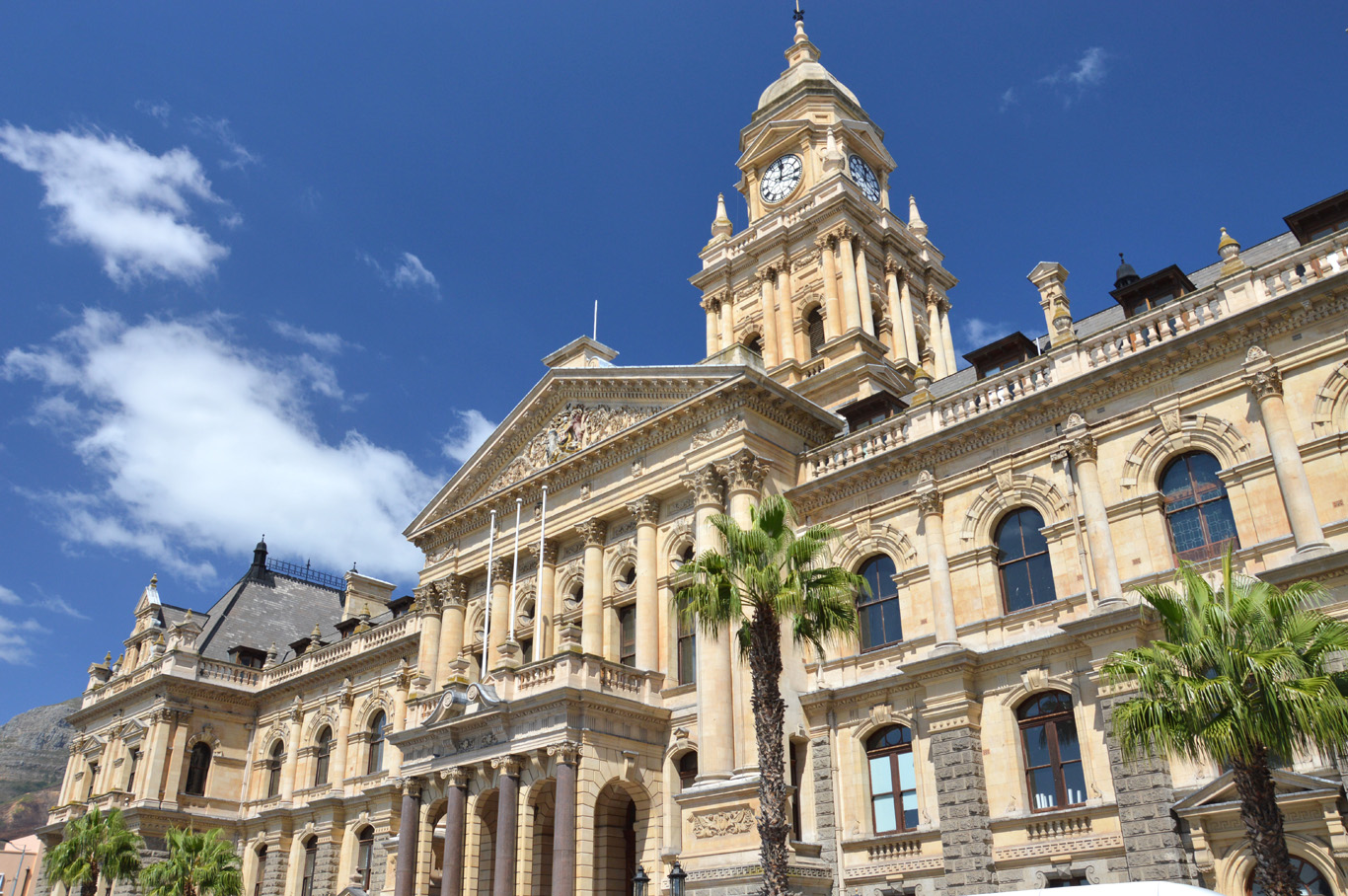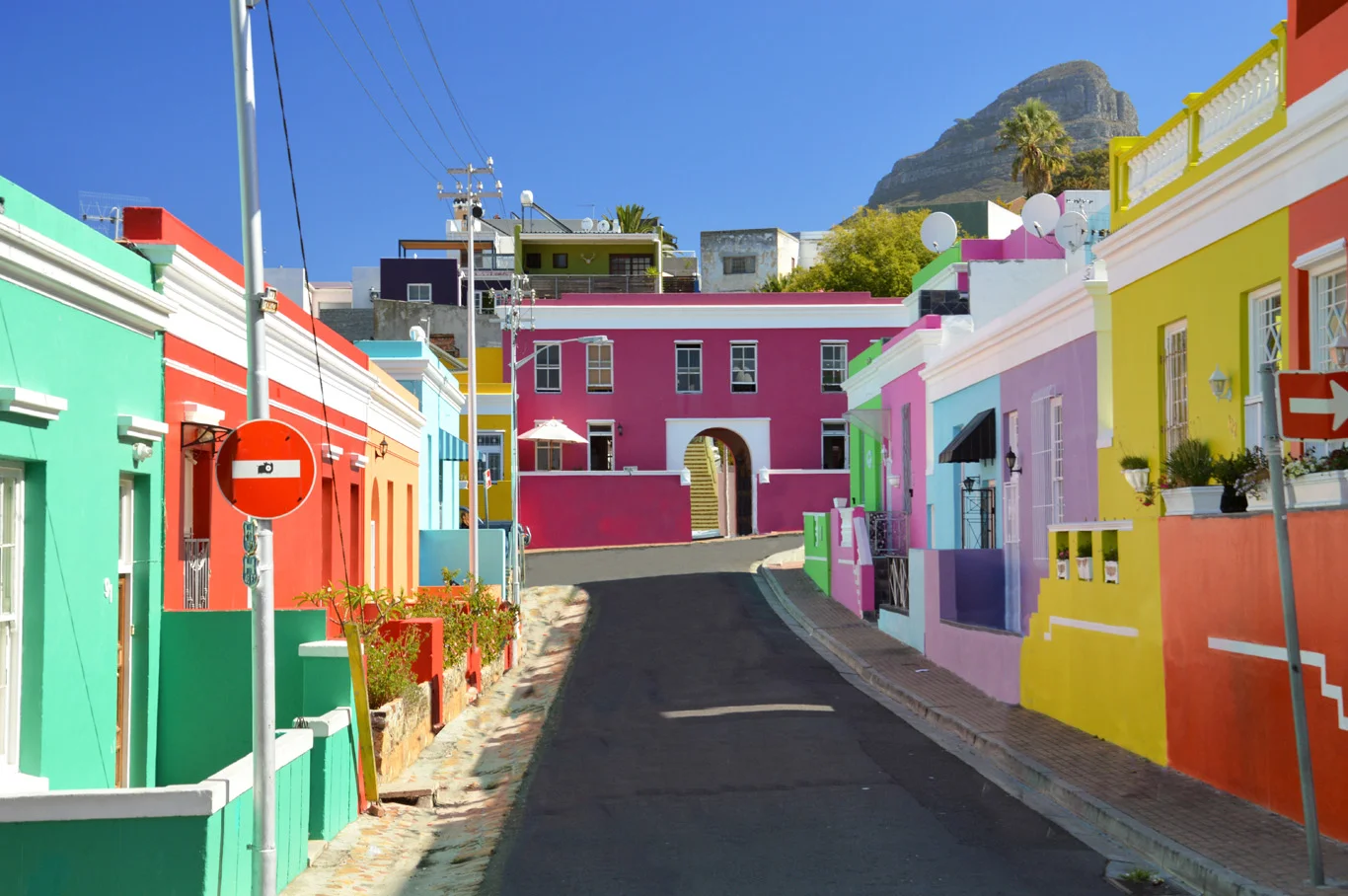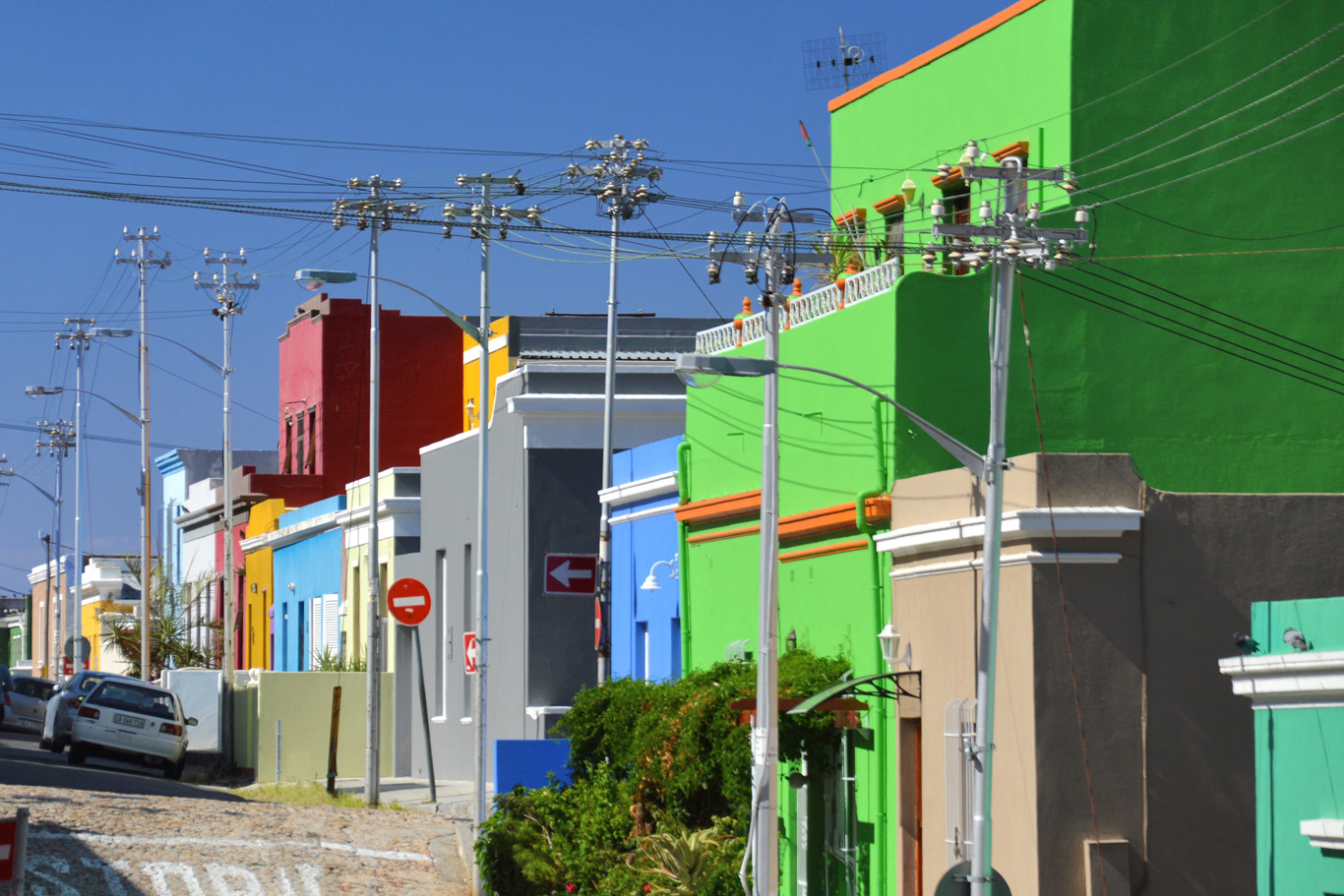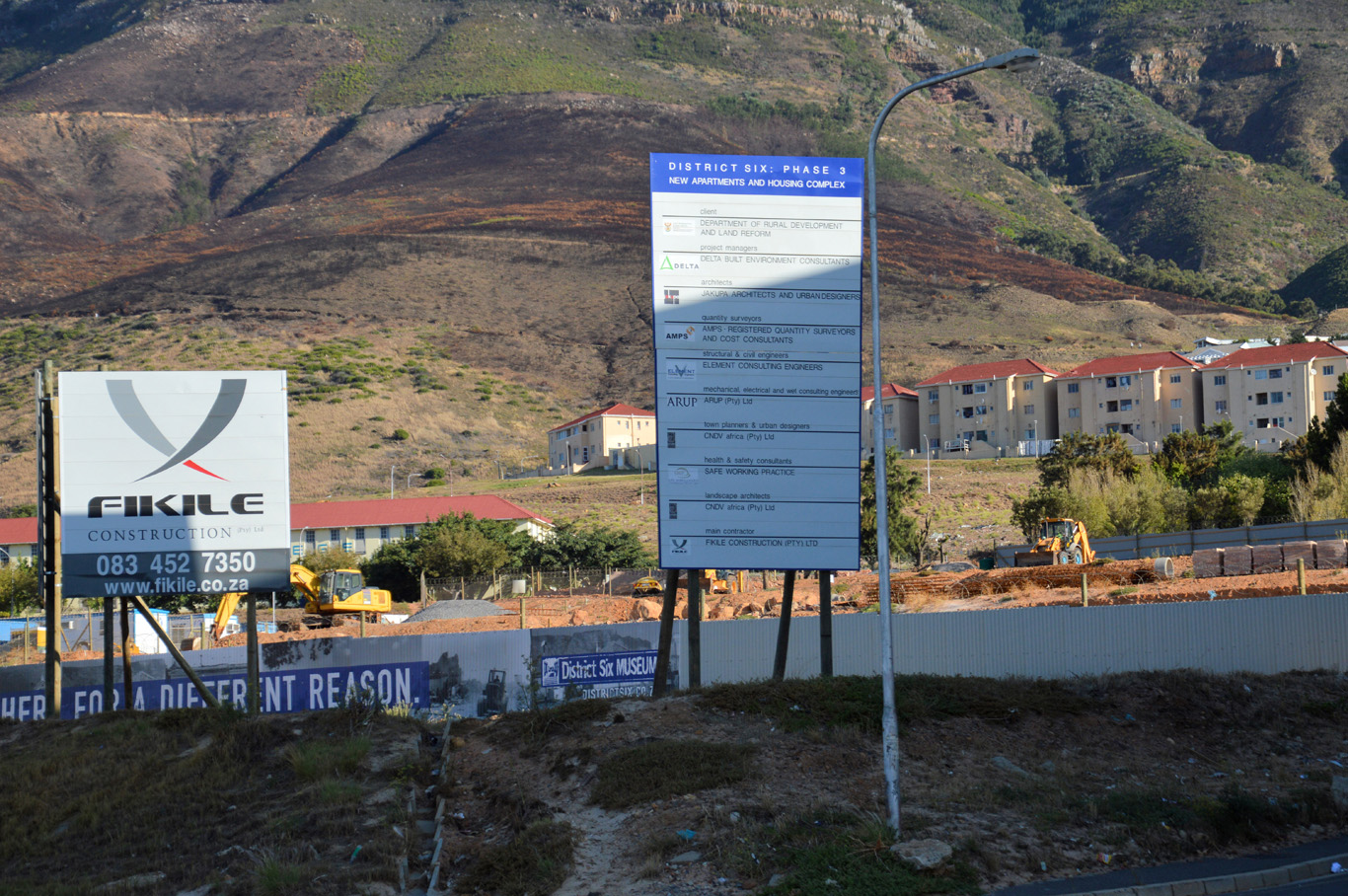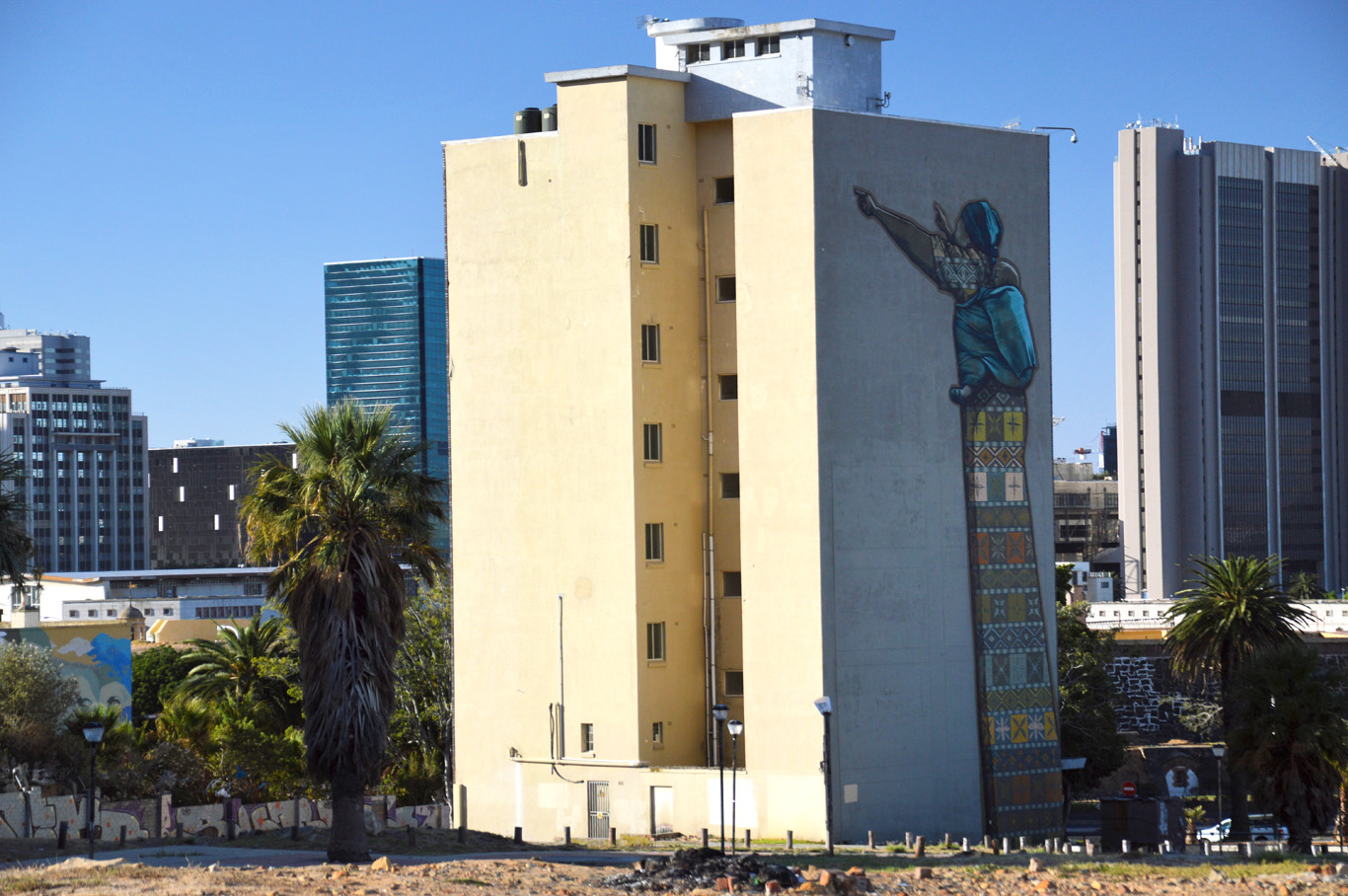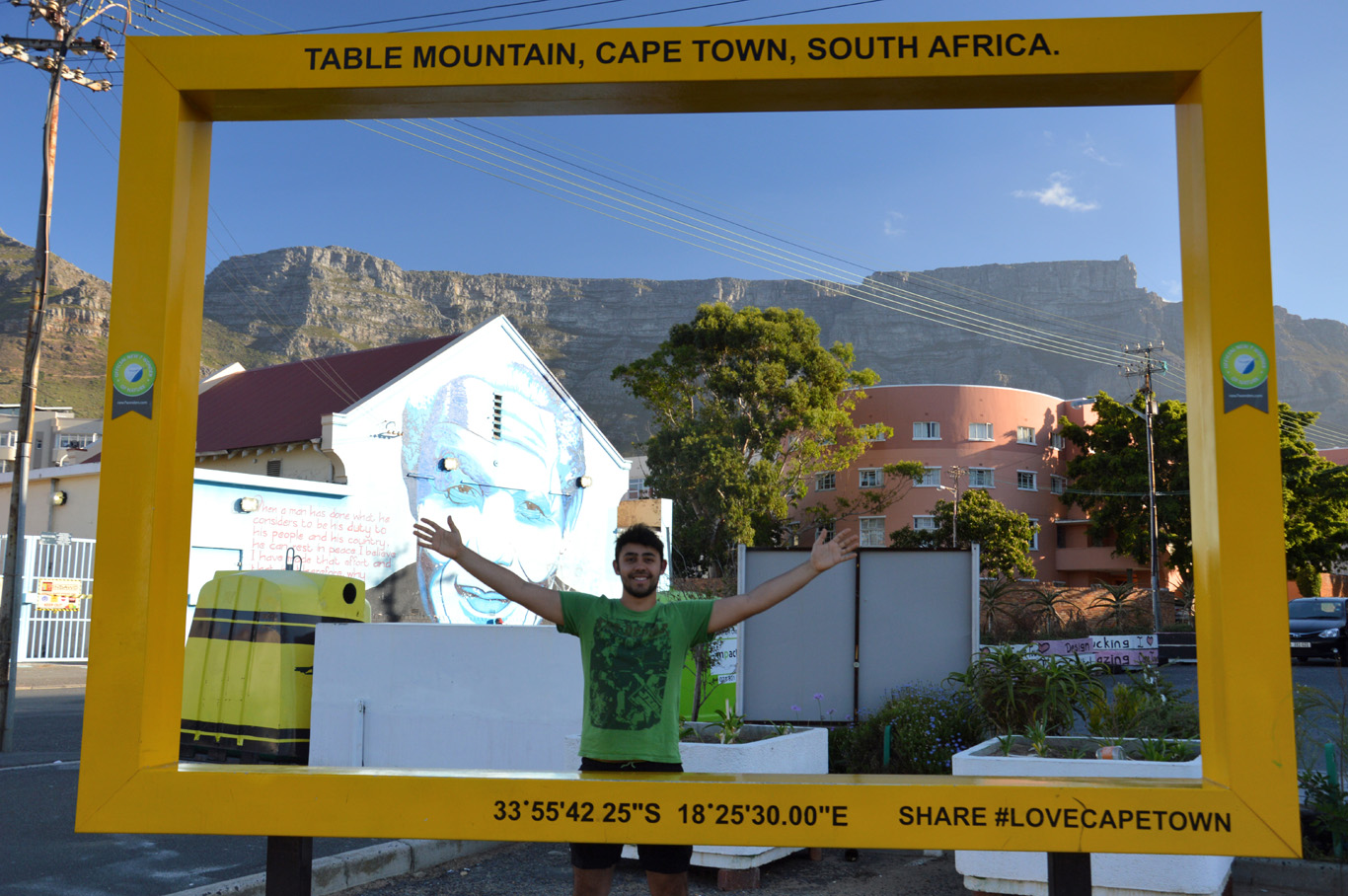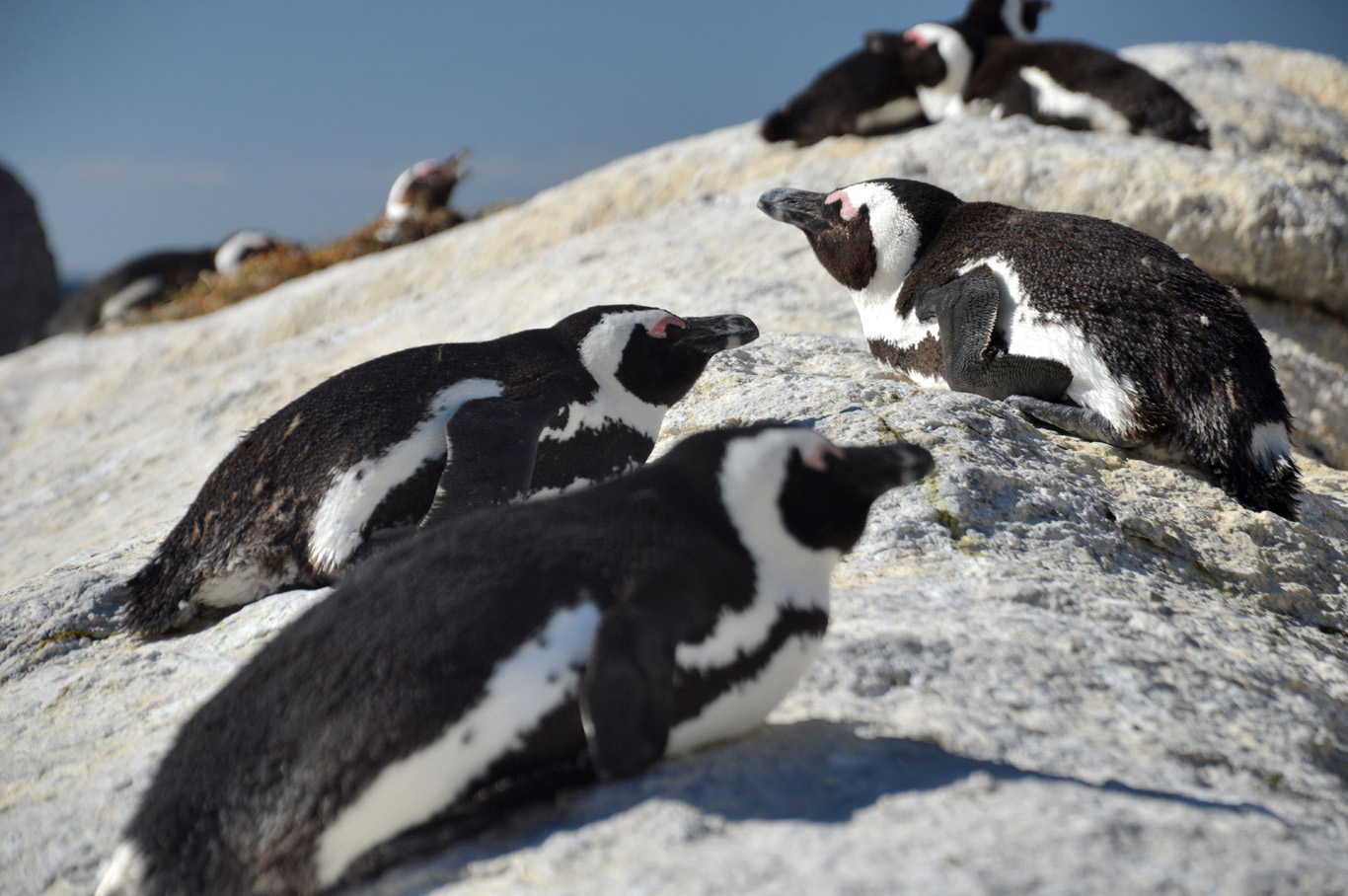Cape Town, South Africa's most famous city is extremely popular among visitors flocking to this beautiful country - especially that it's surrounded by nice beaches from one side, and from the other - spectacular (although not too high) mountains offering some amazing hike opportunities.
However, what I've noticed is that many of the Westerners tend to see mostly the "posh" places around the city, such as the lavish waterfront, luxurious coastline or the most recognizable landmark - the table mountain. These spots are amazing indeed, but what about the very center of Cape Town? What's it like there? Why is it often omitted? How do the ordinary locals get by with their lives? And - the most important thing - is it safe to visit?
Is Cape Town safe?
South Africa doesn't have a good reputation regarding safety. The first impressions of Cape Town, however, seem to prove otherwise, though. During our ride from the airport to the city, we have seen some contrast - but it wasn't nowhere near as strong as in South Asia or Central America. Cape Town looked clean, colorful, very modern and well organized.
Due to our limited budget, we decided to stay in a hostel in the city center, unlike most of the visitors who prefer to book their accommodation somewhere along the coast. This way we had a chance to visit the core of the city better and understand its turbulent history.
South Africa seems to be a bit "upside down" when it comes to its cities. In most of the huge metropolitan areas on our globe, it is the very center that is maintained in the best way possible and it's the place of social interactions, shopping and entertainment. In South African cities, this rule doesn't apply. The city center is usually dodgy, dirty and unsafe comparing to the outside parts where the more-well-off citizens tend to live.
Comparing to Johannesburg (check my post about safety there), Cape Town's city center is better maintained, cleaner and less dangerous. In Johannesburg, even during the day we felt the need to look behind our shoulders in some areas. In Cape Town, all seemed to be perfectly fine... until the sunset.
The sunset in Cape Town is pretty early, around 6 pm and when it gets dark, it's better not to roam around the city center streets. We tried to visit some restaurants beside the hostel and fell extremely uncomfortable walking just across the street or a couple of blocks away. The walk didn't take longer than 2 minutes and it was around 8 pm. During that time, we were stopped and almost mugged by two different individuals. One said he had a knife in case we were reluctant to give him money. We gave him some changed and he left. He seemed to be a drug addict and wasn't too intimidating, more like a pushy beggar, but anyway, the situation was far from nice. When another came over, we just jumped across the street in between the cars to avoid the contact.
It was a weird experience, because the city center was well maintained and looked perfectly fine. Yet we didn't feel safe even to walk a few streets away from the hostel in order to eat out! I'm not used to stay locked inside after the sunset, especially early in the evening, so I felt a bit like a prisoner - but I preferred not to take risks. Thanks God, we found a solution - cheap and good - Uber!
In different areas of Cape Town, it's a completely different story though. Around the V&A Waterfront shopping mall, the whole families enjoy their evenings. No worries there at all. Just make sure you take a taxi or Uber everywhere you go after dark - Uber is very cheap and reliable.
Cape Town City Center - What to see and how to feel safe during visiting
When you visit the waterfront, the mountains, whether you drive or take a tour, you don't need to be concerned about safety much. But how to see the city itself without feeling intimidated? During the day, it's not a big problem, and there's one amazing solution - take a free walking tour!
There are four tours available (we did all three of them) which allow you to get to know the very core of the city, get to know the history and some interesting facts. And, with a group, you'll feel way safer. The group size is not as big as in other popular cities, so it's also more comfortable to walk and visit. As you'll see in the photos below, Cape Town streets and buildings are beautiful, well maintained and it's a bit hard to believe that such a place can be dodgy at all!
Cape Town - The City Center
The waking tours start at the Greenmarket Square - the very heart of Cape Town. Cape Town is a relatively new city and the square was built at the end of the 17th century. It's a nice place where you can buy some South African souvenirs, admire some African music and dances and find Cape Town's oldest building - the Old Town House which is the only part of the original square still standing. Next to it, note the beautiful Central Methodist Church from the 19th century. Looking at those buildings, you may feel like you're somewhere in Europe. Nevertheless, the Greenmarket Square has also a darker history - it was used as a slave market.
Other magnificent buildings and interesting things not to be missed are (you can see all of them during the walking tour):
- still unfinished, beautiful St. George's cathedral,
- the Presidential Residence (Tuynhuys) - a palace dating back to the 18th century with beautiful details and an amazing background of the table mountain
- Houses of Parliament with the statue of Queen Victoria (19th century)
- Cape Town City Hall - a monumental building from the beginning of the 20th century - it is impressive but some of the areas around are very dodgy, probably due to the proximity of a bus station
- note also the oldest church in Cape town - the Groote Kerk, squeezed in between modern buildings
- if you're interested in the history of slavery, Slavery Museum is located right beside the Groote Kerk Church
- a piece of the infamous Berlin Wall which was given to Nelson Mandela as a gift
- St. George's Mall - nice, cozy pedestrian street with beautiful parks
- the infamous High Court where some unfair trails took place - you can see the division of white/colored people during the apartheid on the benches in front of the building
The view of Cape Town city center from the hostel we stayed in
Greenmarket Square - Old Town House
Central Methodist Church
A piece of the Berlin Wall
Performances at Greenmarket Square
Modern Cape Town
St. George's Cathedral
Beautiful architecture of Cape Town
High Court
A bench for "whites only"
Enjoying chess in the park
Lots of little squirrels love to pose for photos
Presidential mansion
Houses of parliament
Statue of Queen Victoria
Slavery Museum
The oldest church in Cape Town (Groote Kerk)
Beautiful, lonely building
Cape Town City Hall
Downtown Cape Town
Anti-racism march
South African food selection, from left to right: crocodile, springbok, ostrich, kudu antelope, venison sausage and warthog (a type of a wildboar)
Original, South African food
We wanted to try some original food from South Africa and the people in the hostel recommended a restaurant that serves unique dishes, such as crocodile, ostrich or wild boar. It's definitely not suitable for vegetarians but for meat eaters it sounded like a treat. We decided to go for it.
We had learned from the previous experience that after dark, we were supposed to take an Uber rather than walk and we got to the restaurant safely. The interior was nice and cozy with some live music on - the only thing that was discouraging were the prices. But anyway, you don't have a chance to try such delicacies everyday, so we ordered the selection of various kinds of meat.
And the experience - nothing that special. It was nice but I had expected my taste buds to be surprised by the new tastes. It all had a flavor similar to pretty ordinary steak, with the exception of crocodile. I had heard it was similar to chicken but for me it was way more chewy. But other pieces of meat, like the antelope or warthog were tasty. Summing up - it's cool to try once but I wouldn't order it again.
Bo-Kaap district
Bo-Kaap district is a unique, completely different area of Cape Town. Founded by Malaysian/South Asian descendants, it boasts bright, vividly colored buildings in a unique architectural style, some reminding of the houses you can find in Great Britain - but you won't find these colors in the UK! This quarter is populated mainly by Muslims so you can also see the oldest mosque in Cape Town - from 1844.
Bo-Kaap seems like a separate town, but although it doesn't match with the rest of the city, it's easy enough to walk there with the free walking tour. Don't miss it because although it's small, it's so different and original that it's definitely worth a short visit.
Colorful Houses in Bo-Kaap
Oldest mosque in Cape Town - on the left
Bo-Kaap and the Table Mountain
Bo-Kaap
Bo-Kaap
Bo-Kaap
Cape Town's center seen from Bo-Kaap
District Six
There is nothing visually appealing about District Six, but this tour is for those who would love to find out more about the complicated history of South Africa. And it's so worth it. It's also makes us more aware that there are still so many things in us, humans that we need to work on.
District Six was destroyed during the 1970's just because the government under apartheid regime decided that it's not good for many cultures to live in one area. And District Six was the most diverse part of Cape Town. The houses and buildings (with the exception of churches) were destroyed and the citizens themselves were relocated into other areas, sometimes as far as 25 km (20 miles) from District Six.
Nowadays, the only thing you see in District Six are the endless swathes of wild grass and some huts of homeless people here and there. It is truly a sad and hopeless sight.
Go to see District Six only with a guide because, first, there is absolutely nothing there, just empty fields, so to understand the tragedy of this place, you'll need some explanation. The other reason is that some parts of the area are not too safe, our guide warned us not to venture too far.
Beautiful graffiti
District Six
The only church that survived
Sad reality of District Six
Some development in District Six
Slave auction poster
Lion's Head seen from District Six
Some interesting graffiti
Graffiti near District Six
A photo with the famous Table Mountain - while leaving District Six
Other places to see in Cape Town
We have climbed both the Table Mountain and Lion's Head, we've walked around the waterfront to check out the best beaches in the city and had a ride along the two coastlines: of the Atlantic and Indian Ocean. All the places were spectacular and really worth visiting! Have a look at the "Related Posts" section below to find out how to get to all those places and what to expect from them!
If you liked this article, you can also download it via the GPSmyCity app - you will be able to gain access to the guide, which will direct you to all the attractions described above, even if you're offline. Download it here.
Author: Tom @ Adventurous Travels
Related Posts
Copying without permission is not allowed. If you wish to use any of the site's content (photos or text) or work with us, please contact us.
We welcome questions, advice, support or criticism. However, spam comments will be removed.








